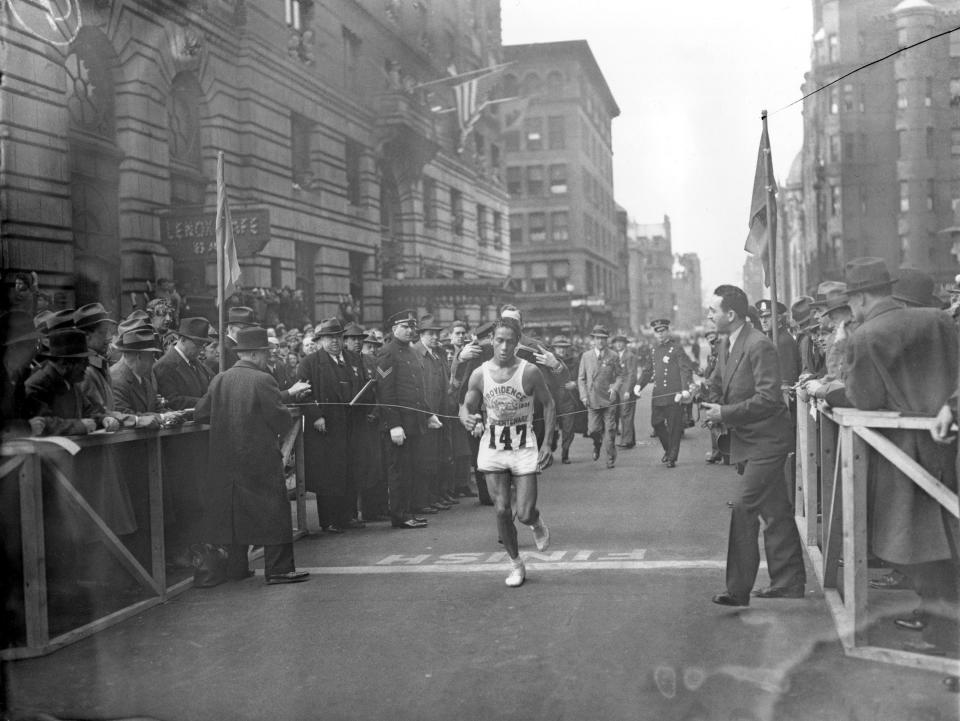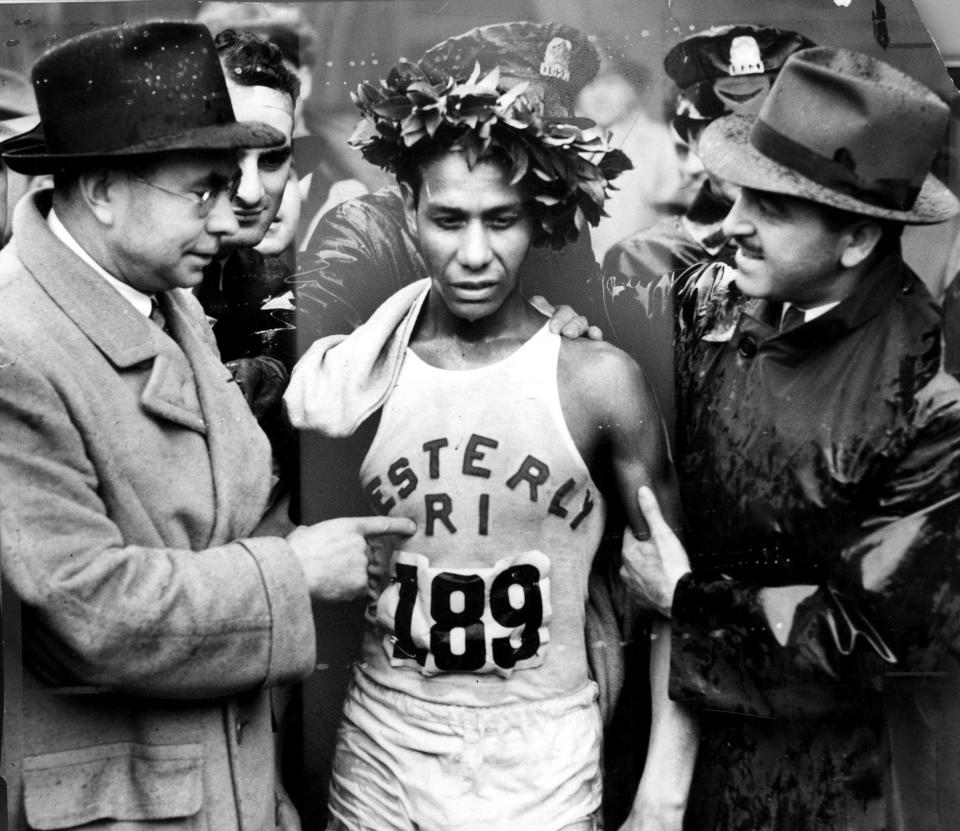How did Heartbreak Hill get its name? A RI marathon legend was at the heart of that story
On Monday, in that critical stretch of the Boston Marathon known as Heartbreak Hill, I’m sure he will be there.
At least his spirit will be.
The spirit of one of the race’s greats.
What a name he had.
Tarzan Brown — of Rhode Island.
He won Boston twice, and lives on as the pride of our state, born in Westerly and a lifelong South County guy.
But he qualifies more than most as a native Rhode Islander. Tarzan was literally so, as a member of the Narragansett Tribe.

Boston Marathon: Perseverance is more than just a word to Boston Marathon hopeful Jaime Kielec of Tiverton
He won the race twice, in 1936 and 1939, and ran it many more.
Born Ellison Brown, he was nicknamed Tarzan for his tree-climbing prowess in Rhode Island's woods and had "Deerfoot" as his tribal moniker — not hard to figure out why. He lived the life of an Indigenous soul during a time of prejudice that often left him struggling. He lived with his wife and four kids in a two-room shack. Many wouldn’t hire Native Americans, even an achiever like Tarzan, so he found individual work as a stonemason and shellfisherman.
Here is how bad the prejudice was. My former colleague Ed Fitzpatrick, now with The Boston Globe, this week found a 1946 article in that paper about Tarzan. In it, Tarzan was quoted as saying he had to find a barber over the state line in New London, Connecticut. In Westerly, they told him, “We don’t cut your kind of hair.”
As this year’s marathon approached, I heard from Tarzan’s granddaughter Anna Brown-Jackson, who asked if I would remember him in print. Anna has been a University of Rhode Island accountant for 22 years, but perhaps her proudest affiliation is calling Tarzan Brown her grandfather.
She remembers him taking her as a child to South County ponds to go crabbing. That’s partly how he fed the family.
Here’s how poor he was: He ran the 1935 marathon — the year before he first won — in shoes that were falling apart because they were all he could afford. At mile 19, they were so ragged he tossed them away, ran the last 7 miles barefoot, and still came in 13th.
Talk about heart.
Patinkin: Ed Cooley's greatest victory: overcoming a childhood of poverty in South Providence

Which brings us to Heartbreak Hill, the dreaded half-mile stretch at mile 20 in Newton. Most people think it’s named because it’s where runners’ dreams are challenged.
In fact, it’s named because of Rhode Island’s Tarzan Brown.
In 1936, Tarzan was leading the pack as he reached the hill. Just then, Johnny Kelley, who’d won the year before and was favored to win again, caught up. He gave Tarzan a friendly pat on the back as if to say, “I’ll take it from here.”
I’ll let Wikipedia’s Johnny Kelley page explain what happened next: “His gesture renewed the competitive drive in Brown, who rallied, pulled ahead, and went on to win — thereby, it was said, breaking Kelley's heart.”
Thus the name.
More: Six months ago, she donated a kidney. Now, this Cranston doc is running a half-marathon.
Tarzan won Boston again in 1939, becoming the first to break the 2:30 mark in the current and slightly longer course.
But one reason Anna Brown-Jackson reached out was because of something Tarzan did with those two victories, a gesture both impressive and poignant.
He sold his two first-place trophies to help feed his family.
Anna and the Brown circle are hoping that somehow, somewhere, someone might have those trophies and recognize them. The Brown descendants would love to have them again.
And Anna is hoping for one other honor for her grandfather.
It would be inspirational to all, she feels, to see a statue of Tarzan Brown at Heartbreak Hill. After all, he's the reason why it's named that.
If you’re listening, Newton — and Massachusetts — what a gesture that would be to an Indigenous legend.
Meanwhile, I have no doubt that at Monday’s marathon, Tarzan Brown, in spirit, will be there anyway.
mpatinki@providencejournal.com
This article originally appeared on The Providence Journal: RI marathon legend Tarzan Brown inspired the name of Heartbreak Hill

 Yahoo Autos
Yahoo Autos 